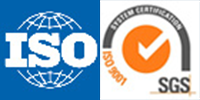News
What is the best metal for a heating element?
The "best" metal for a heating element depends on the specific application, operating conditions, and requirements such as temperature range, oxidation resistance, durability, and cost. However, some of the most commonly used and highly regarded materials for heating elements include:
- Kanthal (FeCrAl Alloy) (We produce high quality Kanthal wire and heating elements)
- Composition: Iron (Fe), Chromium (Cr), Aluminum (Al).
- Max Temperature: Up to 1400°C (2552°F).
- Properties:
- Excellent oxidation resistance due to the formation of a protective aluminum oxide layer.
- High resistivity, making it energy-efficient.
- Durable and long-lasting in high-temperature environments.
- Applications: Industrial furnaces, kilns, household appliances (toasters, ovens), and vaping coils.
- Advantages: Cost-effective, reliable, and widely available.
- Nichrome (NiCr Alloy)(we produce high quality nichrome wire and heating elements)
- Composition: Nickel (Ni), Chromium (Cr).
- Max Temperature: Up to 1200°C (2192°F).
- Properties:
- Good oxidation resistance and high resistivity.
- Ductile and easy to work with.
- Stable performance at moderate to high temperatures.
- Applications: Hair dryers, space heaters, toasters, and other household appliances.
- Advantages: Easy to shape, good for lower-temperature applications, and cost-effective.
- Molybdenum Disilicide (MoSi2)
- Composition: Molybdenum (Mo), Silicon (Si).
- Max Temperature: Up to 1800°C (3272°F).
- Properties:
- Exceptional high-temperature performance.
- Forms a protective silicon oxide layer at high temperatures.
- Brittle and less ductile, making it harder to work with.
- Applications: High-temperature industrial furnaces, glass manufacturing, and ceramic kilns.
- Advantages: Ideal for extreme temperatures, excellent oxidation resistance.
- Tungsten (W)
- Composition: Pure Tungsten.
- Max Temperature: Up to 3400°C (6152°F).
- Properties:
- Extremely high melting point and excellent high-temperature strength.
- Prone to oxidation at high temperatures unless used in a vacuum or inert atmosphere.
- Brittle and difficult to work with.
- Applications: Vacuum furnaces, incandescent light bulbs, and high-temperature industrial processes.
- Advantages: Unmatched performance in extreme temperatures and inert environments.
- Platinum (Pt)
- Composition: Pure Platinum or Platinum alloys.
- Max Temperature: Up to 1600°C (2912°F).
- Properties:
- Excellent oxidation resistance and stability.
- High cost limits its use to specialized applications.
- Ductile and easy to work with.
- Applications: Laboratory equipment, glass manufacturing, and high-precision heating elements.
- Advantages: Reliable and corrosion-resistant, but expensive.
- Silicon Carbide (SiC)
- Composition: Silicon (Si), Carbon (C).
- Max Temperature: Up to 1600°C (2912°F).
- Properties:
- High thermal conductivity and excellent oxidation resistance.
- Brittle and prone to thermal shock.
- Applications: High-temperature furnaces, semiconductor manufacturing, and industrial heating.
- Advantages: Long lifespan and high efficiency in high-temperature environments.
- Nickel-Based Superalloys (e.g., Inconel)
- Composition: Nickel (Ni), Chromium (Cr), Iron (Fe), and other elements.
- Max Temperature: Up to 1200°C (2192°F).
- Properties:
- Excellent corrosion and oxidation resistance.
- High strength and durability at elevated temperatures.
- Applications: Aerospace, chemical processing, and high-temperature industrial equipment.
- Advantages: Versatile and reliable for demanding environments.
Key Considerations for Choosing the Best Metal:
- Operating Temperature: Choose a material that can withstand the required temperature range.
- Oxidation Resistance: Important for high-temperature applications in oxidizing environments.
- Durability: Consider the lifespan and resistance to thermal cycling.
- Cost: Balance performance with budget constraints.
- Ease of Fabrication: Some materials are brittle or difficult to shape.
Summary
- Kanthal (FeCrAl): Best for general-purpose, high-temperature heating elements (up to 1400°C).
- Nichrome (NiCr): Ideal for lower-temperature applications (up to 1200°C) and ease of use.
- Molybdenum Disilicide (MoSi2): Best for extreme temperatures (up to 1800°C).
- Tungsten (W): Suitable for ultra-high temperatures in inert or vacuum environments.
- Platinum (Pt): Excellent for precision applications but expensive.
- Silicon Carbide (SiC): Great for high-temperature industrial applications.
- Nickel-Based Superalloys: Versatile for demanding environments.
For most general-purpose applications, Kanthal or Nichrome are the most popular and cost-effective choices. For specialized or extreme conditions, materials like Molybdenum Disilicide or Tungsten may be required.


